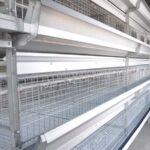What are the hazards of feed mildew?
Many farmers will encounter the problem of moldy chicken feed during the breeding process. After the chicken feed is mildewed, it can not continue to be eaten by the chicken. Otherwise, the chicken will become sick or die, which will cause serious economic losses to the farmers. After the chicken feed is thrown, it will cause economic losses to the farmers, so the chicken feed mold damage?
1, the harm to the chicken
The mold-derived feed will produce mycotoxins, which can cause poisoning if the chicken eats moldy feed. The chicks eat mildewed feed about 3-5 days, and there will be loss of appetite. Individuals with weak resistance will have picky eaters and anorexia. The amount of feed left in the feed trough after chicken poisoning is relatively More and there will be mutual convulsions in the chickens. The poisoned chickens are weak, the movements are slow and weak, the cockscombs are pale, the discharged feces are mainly white or white-green thin water, and even some feces are sticky. The liquid, the poisoned chicks lost weight, the body’s function began to decline, and began to die in about 5-7 days. If the chicken eats an excessive amount of moldy feed, it can cause serious poisoning. It is generally difficult for these chicks to have acute death.

2, the harm to the feed
The nutritional value of the feed after mildew will be greatly reduced, the reproduction of mold requires a lot of nutrition, and the various substances in the feed can just provide nutrients for the mold, in the process, the feed will lose about 10-20% of the total amount. Left and right, when the feed is contaminated with mold, the original taste will change and accompany the appearance of odor, and the palatability of the feed will decrease, so some chickens will show a refusal to eat.
3, the harm to the hen
After hens eat mildewed feed, the egg production rate will drop significantly in poultry farming equipment, and the soft shell eggs will increase.












